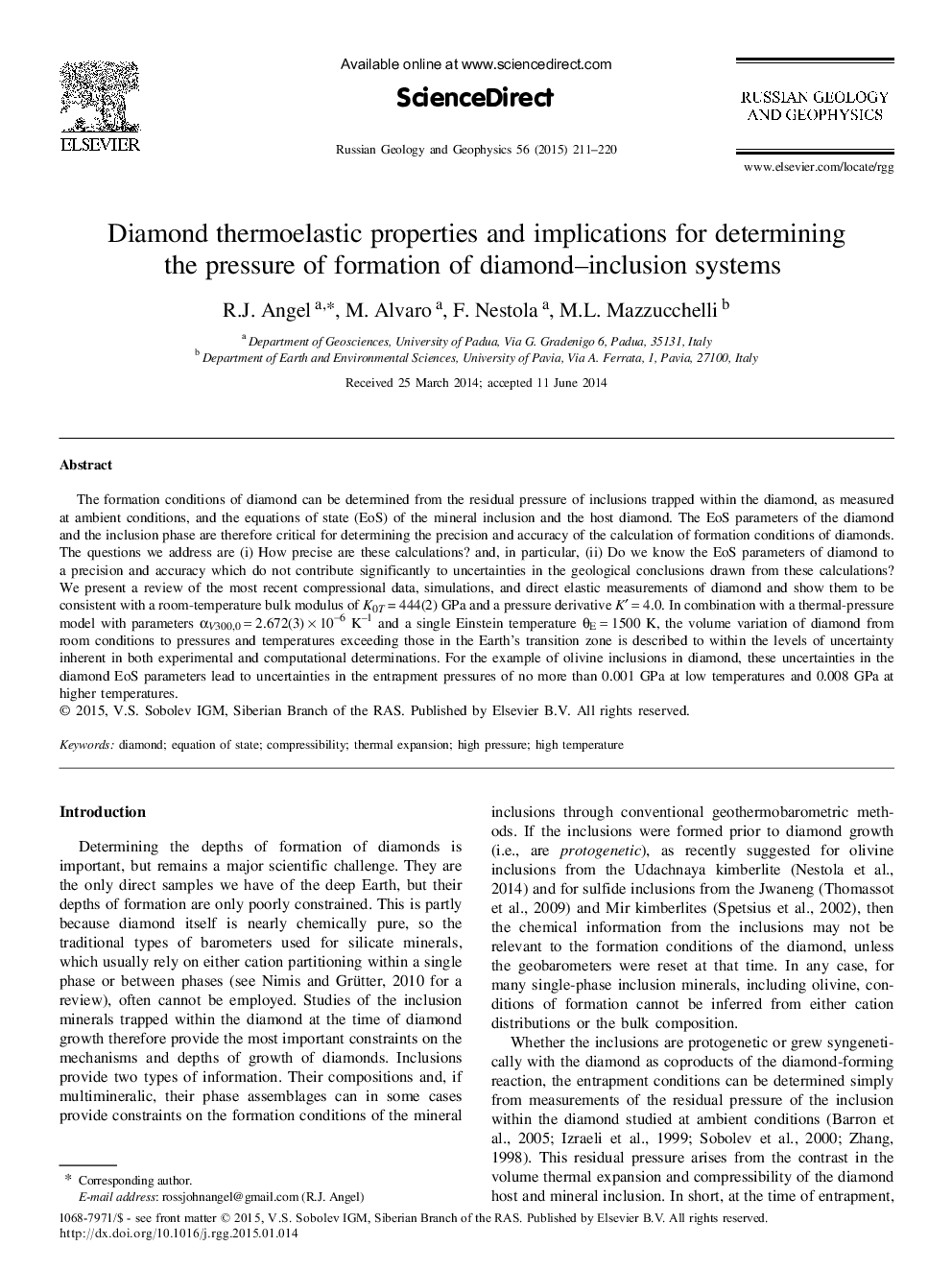| کد مقاله | کد نشریه | سال انتشار | مقاله انگلیسی | نسخه تمام متن |
|---|---|---|---|---|
| 4738451 | 1641043 | 2015 | 10 صفحه PDF | دانلود رایگان |
The formation conditions of diamond can be determined from the residual pressure of inclusions trapped within the diamond, as measured at ambient conditions, and the equations of state (EoS) of the mineral inclusion and the host diamond. The EoS parameters of the diamond and the inclusion phase are therefore critical for determining the precision and accuracy of the calculation of formation conditions of diamonds. The questions we address are (i) How precise are these calculations? and, in particular, (ii) Do we know the EoS parameters of diamond to a precision and accuracy which do not contribute significantly to uncertainties in the geological conclusions drawn from these calculations? We present a review of the most recent compressional data, simulations, and direct elastic measurements of diamond and show them to be consistent with a room-temperature bulk modulus of K0T = 444(2) GPa and a pressure derivative K = 4.0. In combination with a thermal-pressure model with parameters aV300,0 = 2.672(3) x 10- 6 K- 1 and a single Einstein temperature 0E = 1500 K, the volume variation of diamond from room conditions to pressures and temperatures exceeding those in the Earth’s transition zone is described to within the levels of uncertainty inherent in both experimental and computational determinations. For the example of olivine inclusions in diamond, these uncertainties in the diamond EoS parameters lead to uncertainties in the entrapment pressures of no more than 0.001 GPa at low temperatures and 0.008 GPa at higher temperatures.
Journal: Russian Geology and Geophysics - Volume 56, Issues 1–2, January–February 2015, Pages 211-220
